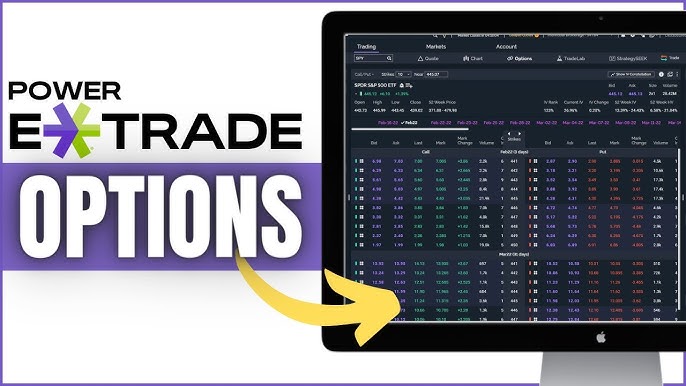An Organised Trading Facility (OTF) is a multilateral system that allows for the trading of bonds, structured finance products, emission allowances, and derivatives among multiple third-party buying and selling interests, without the need for regulation as a market or multilateral trading facility (MTF). OTFs are a form of multilateral trading venue in the European Union that enable third parties to trade various financial products, excluding equities.
OTF operators are allowed to engage in principal trading in bonds, structured finance products, emission allowances, and derivatives. As a result of its objective to increase transparency, the OTF was introduced as part of the MiFID II regulation. Despite its similarities to MTFs, the OTF can only be operated by an investment firm and can offer non-equities, whereas MTFs can offer both equities and non-equities and can be run by both investment firms and market operators.

Credit: m.youtube.com
What Is An Organised Trading Facility?
An Organised Trading Facility (OTF) is a multilateral system where buying and selling interests in bonds, structured finance products, emission allowances or derivatives can interact outside of regulated markets or multilateral trading facilities (MTFs). OTFs can only be operated by investment firms and are distinct from MTFs, which are run by investment firms or market operators and can offer equities as well as non-equities.
Regulations Governing Otfs
An Organised Trading Facility (OTF) is a multilateral system where third-party buying and selling interests in bonds, structured finance products, emission allowances or derivatives can interact. OTFs and Multilateral Trading Facilities (MTFs) are subject to the EU’s Markets in Financial Instruments Directive II (MiFID II). OTFs are typically operated by investment firms and can only offer non-equities. On the other hand, MTFs can offer equities and non-equities and can be operated by investment firms or market operators.
OTF operators have several responsibilities, including pre-trade transparency, post-trade transparency, trade reporting, and record-keeping. Also, OTF operators must ensure compliance with relevant regulations governing market conduct and trading infrastructure.
Reporting on trades conducted through OTFs is a regulatory requirement, and market participants must maintain and report details of transactions to approved trade repositories. The objective of these reporting requirements is to enhance transparency and reduce systemic risks associated with trading in financial markets.
Advantages And Disadvantages Of Trading On An Otf
An Organised Trading Facility (OTF) is a multilateral system where multiple third-party buying and selling interests in bonds, structured finance products, emission allowances or derivatives can interact. The advantages of trading on an OTF include greater liquidity, price transparency and the possibility of trading larger quantities of securities. However, there are also some disadvantages to consider. For example, the regulatory requirements can be complex and the costs associated with trading on an OTF might exceed those of trading on regulated markets or Multilateral Trading Facilities (MTFs).
The main difference between an OTF and an MTF is that the former can only offer non-equities, whereas MTFs can offer equities and non-equities. Additionally, OTFs can only be operated by an investment firm, while an MTF can be run by an investment firm or market operator. It is also important to understand that both OTFs and MTFs are types of businesses that operate trading facilities, and they are both subject to regulatory oversight.
When comparing trading on an OTF to other facilities, it is important to consider the specific needs and requirements of each trader. For example, while an OTF might offer greater liquidity and price transparency, it might not be the most cost-effective option for all traders. Additionally, traders might need to consider whether they need to trade equities or non-equities, or whether they are more comfortable trading on regulated markets or an OTF.
In conclusion, while trading on an Organised Trading Facility (OTF) offers advantages such as greater liquidity and transparency, there are also some disadvantages such as higher costs and regulatory complexity. Traders should carefully consider their specific needs and requirements when choosing between OTFs, MTFs, and regulated markets, and make an informed decision based on the factors that are most important to them.

Credit: www.facebook.com
Understanding The Role Of Otf Operators
Understanding the role of OTF operators is crucial in the world of finance and trading. An OTF is a multilateral system where buying and selling interests in bonds, structured finance products, emission allowances, or derivatives interact. The main difference between OTFs and MTFs is that OTFs can only offer non-equities, whereas MTFs can offer both equities and non-equities.
Organised Trading Facility (OTF) is a multilateral system that allows third-party buying and selling interests in bonds, structured finance products, emission allowances or derivatives to interact. Unlike regulated markets or MTFs, OTFs are not subject to the same transparency requirements. The responsibilities of OTF operators include matching client orders, ensuring the fairness and transparency of the facility, and leading the way in the market. Although they can engage in matched principal trading in non-equities, they can only be operated by an investment firm, while an MTF can be run by an investment firm or market operator. Understanding the role of OTF operators is crucial for investors to make informed decisions in the competitive trading environment.Otfs Vs Other Trading Facilities
An Organised Trading Facility (OTF) is a multilateral system for trading bonds, derivatives, and other non-equity financial products, where third-party buying and selling interests can interact. Unlike Multilateral Trading Facilities (MTFs), OTFs can only be operated by investment firms.
An Organised Trading Facility (OTF) is a multilateral system that is not a regulated market or Multilateral Trading Facility (MTF), but where multiple third-party buying and selling interests in bonds, structured finance products, emissions allowances or derivatives can interact. The main difference between OTFs and MTFs is that OTFs can only offer non-equities, while MTFs can offer equities and non-equities. Additionally, an OTF can only be operated by an investment firm, while an MTF can be run by an investment firm or market operator. Both have their advantages and disadvantages, and which facility to choose depends on the specific needs of the traders. It’s important to research and understand these differences in trading facilities before selecting the appropriate one.
Credit: corporatefinanceinstitute.com
Trading Financial Instruments On An Otf
An organised trading facility (OTF) is a trading venue where multiple parties can buy and sell different financial instruments like bonds, derivatives, structured finance products, and emission allowances, but not equities. Unlike regulated markets or multilateral trading facilities (MTFs), an OTF is not required to provide pre- and post-trade transparency. OTFs operate on a multilateral basis where different parties can interact with one another to complete trades. The fees and costs of trading on an OTF depend on the instrument being traded and the investment firm operating the facility. One significant difference between MTFs and OTFs is that an investment firm can operate an OTF, while an MTF can be owned by a market operator or an investment firm.
| OTF vs MTF Trading | |
|---|---|
| OTF | MTF |
| Operated by an investment firm | Can be run by a market operator or an investment firm |
| Can offer non-equities only | Can offer equities and non-equities instruments |
Impact Of Technology On Otfs
The impact of technology on Organised Trading Facilities (OTFs) has been significant, with the widespread adoption of electronic trading platforms allowing for faster and more efficient trading processes. With the ability to execute trades automatically, OTFs can operate more efficiently and provide a seamless experience for traders.
Additionally, technological advancements have enabled greater transparency and access to previously restricted markets.
An Organised Trading Facility (OTF) is a multilateral system where multiple third-party buying and selling interests in bonds, structured finance products, emission allowances, and derivatives can interact. The introduction of electronic trading has brought significant impacts on OTFs, resulting in increased automation and efficiency. The implementation of electronic trading has eliminated the need for physical exchanges, allowing participants to interact through digital platforms. However, there are potential risks and challenges associated with the use of electronic trading. Market participants have to ensure that their systems are resilient and have sufficient capacity to handle sudden surges in trading volumes. They also need to protect themselves against cybersecurity threats and comply with regulatory requirements. Despite the challenges, the adoption of technology in OTFs has brought numerous benefits, and it is evident that digital platforms are the future of trading.Future Of Otfs
An Organised Trading Facility, or OTF, is a multilateral trading system where multiple third-party buying and selling interests in bonds, derivatives, emission allowances, and structured finance products are able to interact. OTFs are different from Multilateral Trading Facilities (MTFs) as they are not regulated markets and can only offer non-equities, while MTFs can offer equities as well as non-equities. In addition, only an investment firm can operate an OTF, while an MTF can be run by an investment firm or market operator. OTFs have been growing in popularity and demand over time, and this trend is expected to continue in the future. There may also be potential regulatory changes in the future that could impact the operation of OTFs. Overall, emerging trends and opportunities in the OTF space may present new avenues for investment in the future.
Frequently Asked Questions Of Organised Trading Facility
How Does An Organised Trading Facility Work?
An Organised Trading Facility (OTF) is a type of multilateral system that allows for the buying and selling of bonds, derivatives, emission allowances, and structured finance products between multiple third-party interests. Unlike MTFs, OTFs can only offer non-equities and must be operated by an investment firm.
It is a regulated trading venue in European Union markets.
What Is The Difference Between Otf And Mtf Trading?
OTF and MTF trading are both multilateral trading facilities, but the main difference is that OTFs can only offer non-equities, while MTFs can offer equities and non-equities. Additionally, OTFs can only be operated by an investment firm, while MTFs can be run by an investment firm or market operator.
What Is A Trading Facility?
A trading facility is a physical or electronic system that allows multiple participants to trade agreements, contracts or transactions. An Organized Trading Facility (OTF) is a multilateral system that allows third-party buying and selling interests in bonds, derivatives, structured finance products, or emission allowances to interact.
Unlike a Regulated Market or Multilateral Trading Facility, an OTF cannot offer equities and is usually operated by an investment firm.
What Is Organised Trade?
An Organised Trading Facility (OTF) is a platform that offers a multilateral system for trading products such as bonds, derivatives, structured finance products, and emission allowances, but not equities. It is similar to a Multilateral Trading Facility (MTF), but an OTF is operated by an investment firm and can only offer non-equity products.
Third-party buying and selling interests can interact on an OTF.
Conclusion
An Organised Trading Facility is a type of multilateral system in which multiple third-party buying and selling interests in various financial instruments can interact. While similar to a Multilateral Trading Facility, an OTF can only offer non-equities and can only be operated by an investment firm.
It’s important for traders to understand the differences between various trading facilities, as each offers unique benefits and limitations. By staying informed, traders can make more informed decisions and maximize their potential for success.

